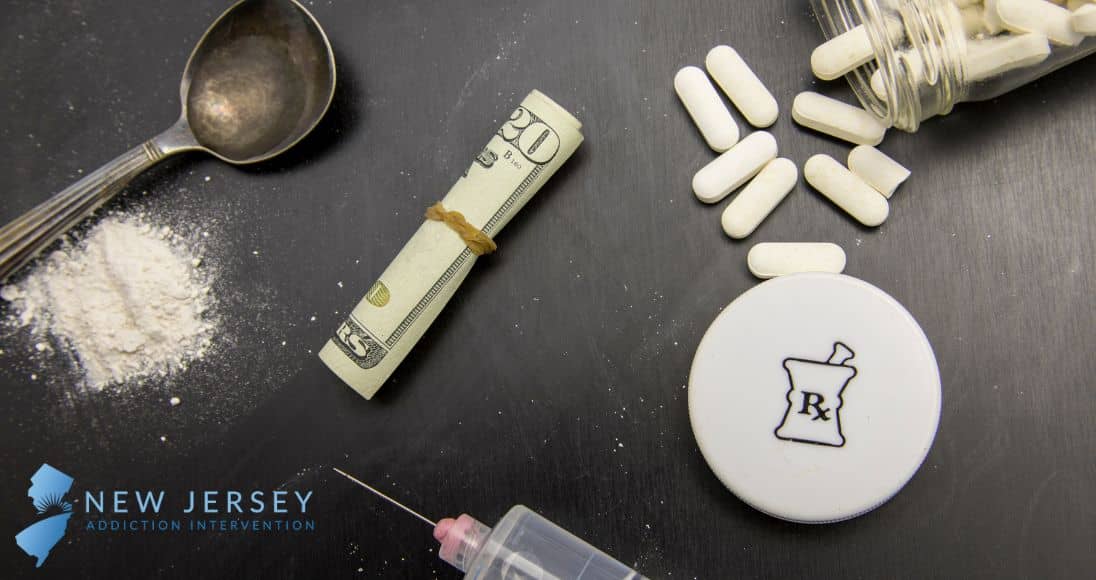Fentanyl is one of the most potent and powerful opioids there is. It is so powerful that as little as 2 mg (equivalent to two grains of salt) can be lethal to people who don’t have a tolerance built up to opioid drugs. Fentanyl is so common that it is the leading contributor to opioid overdose deaths today.[1]
There are two types of fentanyl: medicinal fentanyl which is prescribed to patients who have severe pain and are tolerant to other opioids (such as cancer patients) and illegally manufactured fentanyl (IMF) that is sold on the streets or added to other drugs to increase the potency and decrease the price. When abused, both types of fentanyl can be dangerous and habit-forming.
If you have been taking fentanyl for a long time, whether medically or recreationally, you may be physically dependent on the drug. This means when you abruptly stop using it, you go into withdrawal. Using potent opioids like fentanyl can result in physical dependence in as little as two weeks of daily use.
While fentanyl withdrawal is usually not life-threatening, it can be agonizing. Knowing what to expect during the fentanyl withdrawal timeline and how to cope can help you get prepared for taking the first step toward recovery.
Symptoms of Fentanyl Withdrawal
Fentanyl withdrawal symptoms are the same as withdrawal from other opioids. Symptoms are usually flu-like in nature, but they are rarely life-threatening. Common symptoms include:
- Yawning
- Lacrementation (teary eyes)
- Restlessness
- Runny nose
- Chills
- Sweats
- Backache
- Stomach ache
- Joint pain
- Muscle aches
- Nausea
- Diarrhea
- Vomiting
- Hypertension
- Increased respiratory rate
- Insomnia
- Dilated pupils
- Anxiety
- Depression
How Long Does Fentanyl Withdrawal Last?
The onset and overall duration of the fentanyl withdrawal timeline vary from one situation to the next. One important factor is the type of fentanyl you are detoxing from.
If you are detoxing from the fentanyl patch, your symptoms may not appear until day 2 or 3 and may last for more than a week. This is because fentanyl transdermal patches are extended-release and have a very long half-life.[3] However, most people who are detoxing from fentanyl are detoxing from IMF. IMF comes in the form of a liquid or a powder and has a very short half-life, so symptoms can begin in the first few hours after your last dose and may last for up to a week.
Other factors that influence how long fentanyl withdrawal lasts include:
- Your length of fentanyl use
- The severity of your fentanyl addiction
- Age, weight, and BMI
- Liver function
- Physical health
- Co-occurring mental health conditions
- Polydrug use
Fentanyl Withdrawal Timeline: What to Expect
If you have been taking Duragesic (the transdermal patch) symptoms of withdrawal will begin 24-36 hours after your last dose. But, if you have been taking powdered or liquid fentanyl, withdrawal symptoms will begin 2 to 4 hours after taking your last dose.
Since the exact withdrawal timeline can vary so much from one person to the next, it is usually divided into four phases:
- Early withdrawal – The first symptoms you may experience include cravings, anxiety, sweating, runny nose, watery eyes, cold chills, and goosebumps. These symptoms persist for a week or more.
- Peak withdrawal – Symptoms are usually most severe between 2 and 4 days after your last dose. You may experience body aches, gastrointestinal upset, insomnia, agitation, and intense cravings.
- Late withdrawal – The acute detox period usually lasts for about one week (7 days). Between days 4 and 7, your symptoms should begin to subside. After 7 days, you should feel better physically, although some psychological symptoms such as anxiety, depression, and cravings may persist.
- Post-acute withdrawal (PAWS) – PAWS occurs in chronic long-term opioid users. These are symptoms that persist beyond the acute detox period. These symptoms are mostly psychological, including mood swings, cravings, relapse dreams, self-loathing, and low self-esteem. PAWS can last for several months and, in some cases, up to a year.
The acute detox process is fairly short at about a week for most people. However, just because it is short doesn’t mean it is easy. It’s best to go through detox at a medical facility that specializes in treating opioid use disorder.
Similarly, the thought of facing PAWS can also be intimidating, especially because symptoms can last for such a long time. Fortunately, these symptoms can be managed with a substance abuse treatment program as well as positive lifestyle changes.
How to Detox From Fentanyl Safely
The FDA has approved a few medications for the use in treating opioid dependence and withdrawal. These medications are used by medical detox facilities and addiction treatment centers to help patients cope with the effects of fentanyl withdrawal. Medications include:
- Methadone – an opioid replacement medication that reduces cravings and withdrawal symptoms.
- Buprenorphine – an opioid replacement medication that reduces cravings and withdrawal symptoms while also blocking the effects of other opioids.
- Clonidine – an antihypertensive that is used to treat high blood pressure and may be used off-label during opioid withdrawal to treat hypertension, anxiety, and tension.
While taking medication, patients are often monitored 24-hours a day to ensure their safety. Although opioid withdrawal deaths are rare, they can happen due to vomiting, diarrhea, and dehydration. With medical support and supervision, adverse outcomes can be prevented.
Find Help for Fentanyl Abuse and Addiction Now
Detoxing from fentanyl isn’t easy, but you don’t have to go at it alone. Here at New Jersey Interventions, our team of qualified addiction specialists is available to help you start your recovery safely. We can evaluate your needs, discuss your goals, verify your insurance, and help you find a fentanyl addiction treatment center in New Jersey.
Don’t wait any longer. Call now.
References:
Medically Reviewed: May 2, 2022

All of the information on this page has been reviewed and verified by a certified addiction professional.

